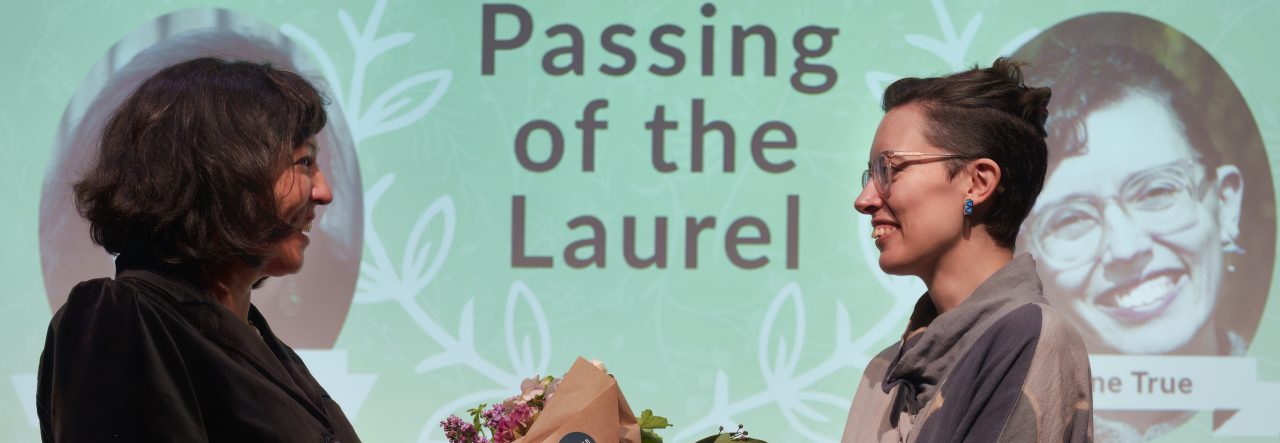
This is the first full week of school for my children who started their new grade levels a few days after Labor Day. It has not been easy rallying them out of bed after throwing bedtime routines out the door for a few weeks. To enjoy the summer break late in August we travelled to Whidbey Island, even taking our 5 chickens along. We’d hoped to visit Useless Bay every day as we have done in years past, but poor air quality due to wildfire smoke kept us indoors lamenting what could have been.
One of the smokey grainy mornings on the island I braved sitting on a porch to do a bit of writing. I’d read earlier that after 17 days of carrying her dead calf in mourning, Tahlequah, the orca whale, had finally let go of the corpse. Staring at a blank page, watching azure skies channel through a clump of heavy hydrangea heads, my thoughts drifted to the hundreds of children separated from their mothers and fathers, alone, afraid and withering in ICE detention facilities. If an animal deeply mourns the loss of her offspring as Tahlequah has, then imagine what the thousands of moms and dads that have lost their children against their will must be feeling? What torments might they be going through? And what of the children’s experience? What do their feelings portend?
Immigrants are leaving El Salvador, Honduras, Guatemala, on foot, in great numbers, women and children, men and children, children alone. They are leaving because of unprecedented violence from gangs that had their origin in the streets of Los Angeles, they are leaving because of poverty, because they have zero prospects for earning a living, and they are also leaving because of environmental degradation. This summer, El Salvador experienced extreme heat and the longest draught ever recorded. For millennia predictable rainfall from May to September has nourished corn, beans and squash –the triumvirate of the local diet. This year the entire annual production of subsistence grains has been jeopardized because of abnormal high temperatures and lack of precipitation.
Could it be, I asked myself sitting under the eerie sky, feeling the itch in my throat increase from breathing the ashy air, that the orca in Puget Sound is connected to the lost corn, squash and beans in Central America and to the hundreds of children holding on to themselves in ICE facilities?
My meandering brought me to Chief Sealth’s speech of 1854 where he addresses the interconnectedness of all things. There are a couple of versions of the speech, but in my favorite one which you can watch here https://www.youtube.com/watch?v=e9a70fz6420 he states, “We are part of the earth and it is part of us […. ] Man did not weave the web of life. He is merely a strand in it – Whatever he does to the web, he does to himself.”
In early August I had the pleasure of traveling to Vashon Island to a reading organized by Merna Hecth, the Island’s Poet Laureate. There I read with Shankar Narayan, a Seattle based poet originally from India. Shankar shared a poem with us that evening that has haunted me ever since and he was ever gracious to le me share it in this forum.
From Whidbey Island, to the Salish Sea, ICE detention facilities, Central America, India, Vashon Island, to Seattle, “Every part of the earth is sacred,” as Chief Sealth once said.
The Times Asks Poets to Describe the Haze Over Seattle
No one asked me, but I would have said this apocalypse
looks like home. The laureate
says a grey gullet has swallowed
a molten coin, another calls it powered cadmium
and cirrhosis, dystopian, grotesque, a crematorium. Yes,
all of these describe my Delhi, and which
of my well-meaning friends will understand
that for a week now I have woken to the warm nostalgia
of exactly the familiar cataclysm that hangs
there every day as I imagine Hiroshima’s
mushroom cloud might have done before dispersing into that dead
silence? Every sunrise and sunset so brilliantine,
and like the finest earth-to-table restaurant a new recipe
daily for the fresh soup of toxins, the plastic mill, the pyre
ground, the matchstick factory where every day five year olds blow off
fingers. There has been no blue
for years. No, these are not things to be proud
of, and looking up at this brown smudge of a Seattle
sky I know I should look away, feel for evacuees and ashed
homes and bear and deer and antelope, but
in the confusion of entanglements holding my life
together I cannot say what’s catching
in my throat, am I now animal remembering how once I would run
in Delhi, laps around that little brown park
with its mongooses and illegally grazing buffalo, before the haze
pressed in, caught into its creep my blackening lung
and squeezed, or is my animal
brain transported to another home on days outside
those twenty-one per year I am allowed
to be my other self, exhale into just another no-different
anonymous body, or is my animal howling
to dam the forgetting when breathing clean so long feels like birthright,
blowing down all those accidental animals, of whom I
am one, whose water is hauled from Cascadian streams where no one
may so much as dip a grimy toe, whose children will never leach carpet-factory
mercury into their bodies, is my animal screaming
blue murder that if some can’t breathe
then none shall breathe, my asbestos lung rasping
to anyone in this town who will listen— this is how the world
lives. And there is nothing that cannot burn.
Shankar Narayan

Thanks so much for sharing this!
Georgia
________________________________
Thank for your words and poem shared. We are all in the visceral chasm trying to ignore it. Tonight, my right eye weeps.
Thanks for sharing Shankar’s poem.
Pingback: Cascadia Daily, Sept. 18, 2018 | Cascadia Magazine